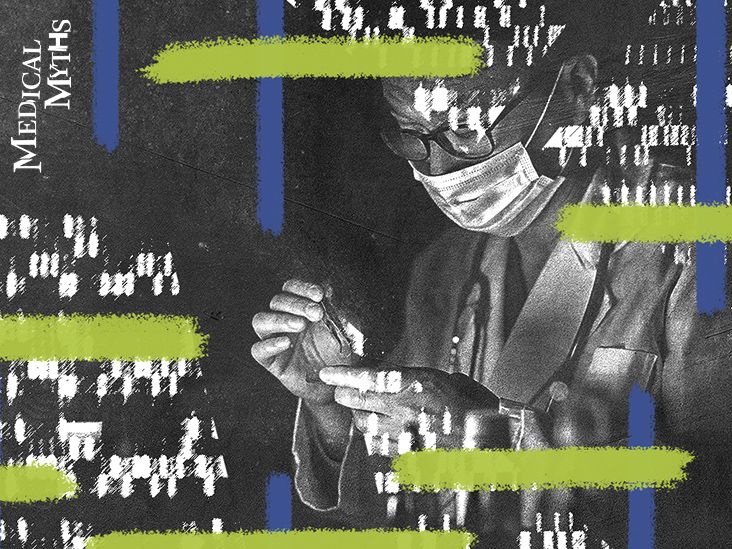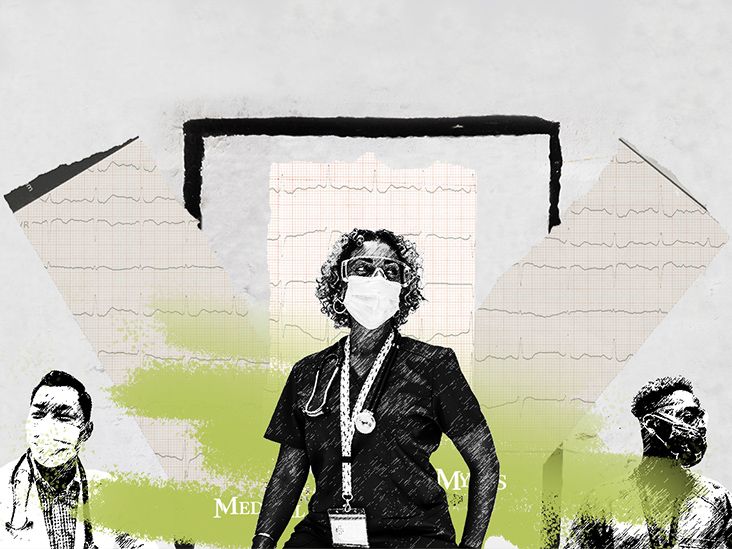
According to the Centers for Disease Control and Prevention (CDC), in 2018, there were 218,520 new cases of lung cancer and 142,080 related deaths in the United States.
Globally, in 2020, lung cancer was the second most common cancer after breast cancer, with
Although prevalent, lung cancer is commonly misunderstood. To help us get to the truth of the matter, we enlisted the help of Dr. Fred R. Hirsch, executive director of the Center of Excellence for Thoracic Oncology at Mount Sinai’s Tisch Cancer Institute, in New York City. He is also the Joe Lowe and Louis Price Professor of Medicine, Hematology and Medical Oncology at the Icahn School of Medicine at Mount Sinai.
As Dr. Hirsch explained to Medical News Today, “That is not correct, and unfortunately, it’s a very hurtful myth and causes stigma.”
According to the CDC, around
Every year, around
“There are several ways to reduce lung cancer risk,” explained Dr. Hirsch. “First and foremost is smoking prevention and smoking cessation.”
For anyone who is trying to give up smoking, here are some evidence-based tips to help.
Dr. Hirsch also described the importance of limiting exposure to secondhand smoke, which is sometimes called passive smoking. According to the CDC:
“Nonsmokers who are exposed to secondhand smoke at home or at work increase their risk of developing lung cancer by
“Other smoking products are also considered to be a potential risk for lung cancer development,” Dr. Hirsch said.
“Lung cancer screening with a low-dose CT scan in high-risk populations, such as people who are 50 years old with a history of smoking a pack a day for 20 or more years, reduces lung cancer mortality by more than 20%.”
“Other risk factors include radon exposure,” Dr. Hirsch continued. “Thus, measuring radon in your home is important. [In addition,] certain lifestyle behaviors are considered potential risk factors, and exercise and avoiding obesity is important.”
“No, that is not true.” Dr. Hirsch confirmed. Although
There is good evidence that pollution generated by traffic increases the risk of lung cancer. For instance, the authors of a
“Exposure to nitrogen dioxide, nitrogen oxide, sulfur dioxide, and fine particulate matter were positively associated with a risk of lung cancer. Occupational exposure to air pollution among professional drivers significantly increased the incidence and mortality of lung cancer.”
However, comparisons between pollution and smoking are harder to make. “Living in polluted cities is a risk factor, but no one knows for sure whether it is worse than the use of tobacco products, and the combination might be even worse,” explained Dr. Hirsch.
Simply put, according to Dr. Hirsch, “Smoking cessation reduces the risk of lung cancer significantly.”
Aside from lung cancer, stopping smoking also reduces the risk of developing a range of other conditions, including heart disease, osteoporosis, and
As the
“It doesn’t matter how old you are or how long you’ve been smoking, quitting smoking at any time improves your health. When you quit, you are likely to add years to your life, breathe more easily, have more energy, and save money.”
“We believe cannabis represents a risk factor,” explained Dr. Hirsch, “but we need more long-term studies. Epidemiological evidence for an association between cannabis and lung cancer is limited and conflicting.”
One of the difficulties in studying this association, he explained, is that people who smoke cannabis often smoke tobacco, too. This makes teasing apart the effects of each factor more challenging.
This is not true. Alongside the myriad benefits of quitting smoking, “People with lung cancer who quit smoking have a better prognosis,” confirmed Dr. Hirsch.
“No, lung cancer surgery does not make lung cancer spread,” Dr. Hirsch told MNT. He then explained why it is important to have early surgery and the measures taken to prevent any spread.
“Lung cancer surgery is advised in early stage lung cancer.” At this stage, he explained, it can cure the cancer.
“If a tumor is large or has loco-regional dissemination,” he continued, “adjuvant therapy, such as chemotherapy or immunotherapy before surgery, will further reduce risk of having cancer cells in the blood.”
Dr. Hirsch added that clinical research has shown that this approach prolongs survival and reduces the risk of dying.
According to Dr. Hirsch, “Talcum has not been associated with higher risk for lung cancer.”
He explained how this myth might have started:
“Some studies have shown a slightly higher risk in people who are involved in talc mining and processing, but it is not clear whether it is because of the mineral or other things underground known to cause lung cancer, such as the radioactive gas radon.”
“Unfortunately, that is not always the case,” Dr. Hirsch explained. “Lung cancer can be detected in totally asymptomatic cases or in individuals with slight respiratory symptoms.”
He explained that this is one reason why lung cancer screening in high-risk people is so important. He pointed out that even in nonsmokers there may be an advantage to screening, but studies have not confirmed this yet.
“Studies with lung cancer screening in never-smokers are ongoing,” he said, reiterating that catching lung cancer early increases survival rates.
Thankfully, this is also false. According to Dr. Hirsch, when healthcare professionals detect lung cancer early, it “has a cure rate of more than 60%.”
He continued: “Even lung cancer diagnosed in more advanced disease today has a much better potential for long-term survival in certain situations. Progress in therapy and outcomes for patients with advanced lung cancer that has specific genetic mutations, which can be
“Because antioxidants play an important role in protecting our cells from DNA damage that could include cancer-causing mutations or other genomic abnormalities, several clinical studies have been performed, but unfortunately, most failed to demonstrate any conclusive protection against lung cancer in a clinical setting,” Dr. Hirsch told us.
“There are a few studies indicating that several dietary antioxidants, like carotenoids and vitamin C may protect against lung cancer, but the results overall are somewhat ambiguous. More specific studies in well-defined smoking populations are needed as well as studies of ‘dosages’ of antioxidants.”
Smoking is perhaps the most well-known risk factor for lung cancer, but it is certainly not the only one. Other risk factors include a family history of lung cancer, exposure to air pollution, exposure to radon, exposure to asbestos, previous radiation to the chest, and chronic lung disease.



